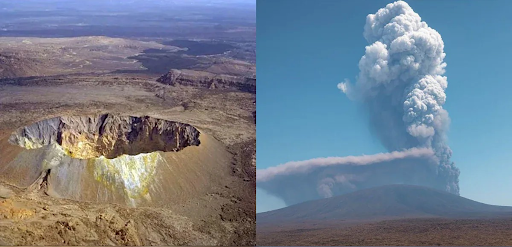




Disclaimer: Copyright infringement not intended.
Paleontologists have announced the discovery of a new species of quetzalcoatline azhdarchid pterosaur, Nipponopterus mifunensis, from the Late Cretaceous of Japan.
|
Period |
Flourished during the Triassic, Jurassic, and Cretaceous periods of the Mesozoic Era (252.2 million to 66 million years ago). |
|
Flight Capability |
First vertebrates to achieve flight, using strong forelegs to launch themselves into the air. |
|
Classification |
Pterosaurs were archosaurs, like dinosaurs, birds, and crocodiles, but not true dinosaurs. |
|
Notable Species |
Quetzalcoatlus, the largest vertebrate known to fly, existed in the late Cretaceous. |
|
Evolution |
Example of convergent evolution; not closely related to birds or bats. |
|
Wing Structure |
Wings formed by a skin membrane connected to an elongated fourth finger, similar to bat wings. |
|
Physical Features |
Earlier species had long jaws with teeth and long tails; later species had reduced tails and some lacked teeth. |
|
Neck and Throat |
Often had long necks and throat pouches for catching fish, similar to pelicans. |
|
Extinction |
Extinct at the end of the Cretaceous period (65.5 million years ago) during the K-T extinction event. |
|
Post Extinction |
After their extinction, birds, considered to be of dinosaur ancestry, took over as the dominant flying vertebrates. |
Source:
|
PRACTICE QUESTION Q.Consider the following statements about Pterosaurs:
Which of the statements given above is/are correct? (a) 1 only (b) 2 only (c) Both 1 and 2 (d) Neither 1 nor 2 Answer: c Explanation: Statement 1 is correct: Pterosaurs were flying reptiles that lived during the Mesozoic Era and are indeed closely related to dinosaurs, though they were not dinosaurs themselves. Statement 2 is correct: Pterosaurs are classified as a distinct group of reptiles under the order Pterosauria, and though they share a common ancestor with dinosaurs, they are not classified as true dinosaurs. |







© 2025 iasgyan. All right reserved